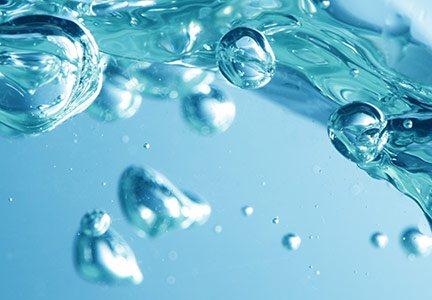Share
Related Topics
Tagged As
Your drinking water comes from surface water or ground water. The water that systems pump and treat from sources open to the atmosphere, such as rivers, lakes, and reservoirs is known as surface water. Water pumped from wells drilled into underground aquifers, geologic formations containing water, is called ground water. The quantity of water produced by a well depends on the nature of the rock, sand, or soil in the aquifer from which the water is drawn. Drinking water wells may be shallow (50 feet or less) or deep (more than 1,000 feet). More water systems have ground water than surface water as a source (approx. 147,000 v. 14,500), but more people drink from a surface water system (195 million v. 101 million). Large-scale water supply systems tend to rely on surface water resources, while smaller water systems tend to use ground water. Your water utility or public works department can tell you the source of your public water supply.
We do not strictly control Google ad content. If you believe any Google ad is inappropriate, please email us directly here.

How Does Water Get To My Faucet?
An underground network of pipes typically delivers drinking water to the homes and businesses served by the water system. Small systems serving just a handful of households may be relatively simple, while large metropolitan systems can be extremely complex—sometimes consisting of thousands of miles of pipes serving millions of people. Drinking water must meet required health standards when it leaves the treatment plant. After treated water leaves the plant, it is monitored within the distribution system to identify and remedy any problems such as water main breaks, pressure variations, or growth of microorganisms.
How Is My Water Treated To Make It Safe?
Water utilities treat nearly 34 billion gallons of water every day. The amount and type of treatment applied varies with the source and quality of the water. Generally, surface water systems require more treatment than ground water systems because they are directly exposed to the atmosphere and runoff from rain and melting snow.
Water suppliers use a variety of treatment processes to remove contaminants from drinking water. These individual processes can be arranged in a “treatment train” (a series of processes applied in a sequence). The most commonly used processes include coagulation (flocculation and sedimentation), filtration, and disinfection. Some water systems also use ion exchange and adsorption. Water utilities select the treatment combination most appropriate to treat the contaminants found in the source water of that particular system.
Coagulation (Flocculation & Sedimentation)
Flocculation: This step removes dirt and other particles suspended in the water. Alum and iron salts or synthetic organic polymers are added to the water to form tiny sticky particles called “floc,” which attract the dirt particles.
All sources of drinking water contain some naturally occurring contaminants. At low levels, these contaminants generally are not harmful in our drinking water. Removing all contaminants would be extremely expensive, and in most cases, would not provide increased protection of public health. A few naturally occurring minerals may actually improve the taste of drinking water and may even have nutritional value at low levels.
Sedimentation: The flocculated particles then settle naturally out of the water. Those particles include clays and silts, natural organic matter, precipitates from other treatment processes in the facility, iron and manganese, and microorganisms. Filtration clarifies the water and enhances the effectiveness of disinfection.
Filtration
The water passes through filters, some made of layers of sand, gravel, and charcoal that help remove even smaller particles.
Disinfection
A small amount of chlorine is added or some other disinfection method is used to kill any bacteria or microorganisms that may be in the water.
Water is often disinfected before it enters the distribution system to ensure that dangerous microbial contaminants are killed. Chlorine, chlorinates, or chlorine dioxides are most often used because they are very effective disinfectants, and residual concentrations can be maintained in the water system.
Disinfection Byproducts
Disinfection of drinking water is one of the major public health advances of the 20th century [see also Disinfection Byproducts - A Question of Balance]. However, sometimes the disinfectants themselves can react with naturally occurring materials in the water to form unintended byproducts, which may pose health risks. EPA recognizes the importance of removing microbial contaminants while simultaneously protecting the public from disinfection byproducts, and has developed regulations to limit the presence of these byproducts. For more information, see www.epa.gov/safewater/mdbp.html.
HHI Error Correction Policy
HHI is committed to accuracy of content and correcting information that is incomplete or inaccurate. With our broad scope of coverage of healthful indoor environments, and desire to rapidly publish info to benefit the community, mistakes are inevitable. HHI has established an error correction policy to welcome corrections or enhancements to our information. Please help us improve the quality of our content by contacting allen@healthyhouseinstitute.com with corrections or suggestions for improvement. Each contact will receive a respectful reply.
The Healthy House Institute (HHI), a for-profit educational LLC, provides the information on HealthyHouseInstitute.com as a free service to the public. The intent is to disseminate accurate, verified and science-based information on creating healthy home environments.
While an effort is made to ensure the quality of the content and credibility of sources listed on this site, HHI provides no warranty - expressed or implied - and assumes no legal liability for the accuracy, completeness, or usefulness of any information, product or process disclosed on or in conjunction with the site. The views and opinions of the authors or originators expressed herein do not necessarily state or reflect those of HHI: its principals, executives, Board members, advisors or affiliates.








